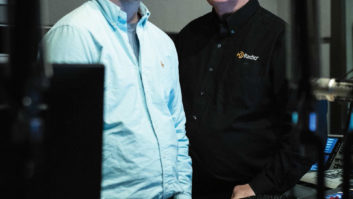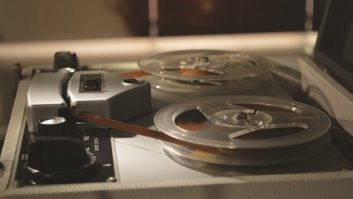Radio history in Philadelphia – the receiver side
Sep 1, 2003 12:00 PM, By Chriss Scherer, editor
The radio connection to Philadelphia also touches the receiver side.RCA is still a popular brand name in consumer electronics, and itshistory goes back to Philadelphia as well. But RCA isn’t the onlyreceiver manufacturer that called this area home. There are two othernames that are well known and several more that tried their hand atradio receiver manufacturing.
RCA
The Radiola I was RCA’s firstmass-produced crystal radio set. This unit was manufactured in August1922 by General Electric.

The RCA Radiola Special (1923) was designed for portable and outdooruse and was housed in a metal case. This radio used a Radiotron UB199tube. The unit was manufactured by the Wireless Specialty ApparatusCorporation.

The RCA Radiola RS (1923) had a square wooden case and used two tubes.This model was manufactured by Westinghouse.

This Atwater Kent model 3955was manufactured in 1923. The early Atwater Kent radios were based onthis open breadboard design.

This early Philco model, likeother early models, was housed in a metal case. The metal cases weresoon replaced by wooden cases, mainly for aestheticreasons.

RCA was the exclusive radio sales agent for the four largestelectrical manufacturing companies: General Electric (which had boughtAmerican Marconi), AT&T, Wireless Specialty Apparatus andWestinghouse. These four companies owned nearly every practical patentfor radio, made most of the commercial equipment, manufactured vacuumtubes and had strong ties to international companies. Through the1920s, RCA did not actually manufacture anything itself, but rather hadits name on products made by the four partner companies.
In 1929, it was decided that the conglomeration of these companieswas a monopoly, and they were forced to disband. About that time, RCAbought the Victor Company, a manufacturer of phonograph players, sothat RCA would be able to continue as a manufacturer. (Victormanufactured a few radios in 1928 that did not sell well.)
The first radio receivers to carry the RCA brand name were theRadiola models. The Radiola I, a crystal set, was manufactured in 1923.The wooden case opened on two sides. The front lid exposed the tuningcontrol and connections for the antenna and headphones. The rearcompartment provided a space to store the owner’s headphones. TheRadiola II was a similar unit, but used two tubes in the tuningsection.
Atwater Kent
Founded in 1902 and originally created to build small electricalitems and automobile parts, the Atwater Kent Manufacturing Companybegan manufacturing radio components in 1922. The first models werebreadboard styles, built on wooden planks. By 1924, the company beganselling radios in wooden cabinets. From 1925 to 1927, the companysponsored the Atwater Kent Radio Hour. As was the case with manycompanies, Atwater Kent was unable to survive during the depression andclosed in 1936.
Philco
In 1906 the Philadelphia Storage Battery Company was founded tobuild batteries and power supplies. In the early 1920s battery salesbegan to decline until a new market appeared: radio receivers. In 1927,the company began manufacturing radio receivers. In 1930 Philco led theindustry in radio receiver sales and remained one of the top radiosellers through the 1950s. In 1960, the company’s profits weresuffering and the company was sold to Ford.
Other manufacturers
Appleby had a short run at manufacturing. The company’s model 60 wasa table-top unit with a wooden, low, rectangular case. The front panelwas made of metal and two dials and a meter on it. The top lifted forinternal access.
Heteroplex manufactured the Deluxe model in 1925. This table-topradio operated on batteries, had three tubes, a two-dial front panel, atop door and was housed in a low, wooden, rectangular case.
Music Master traces its roots to 1908 when Sheip and Vandegriftbegan manufacturing wooden horns for phonographs under the trademark ofMusic Master. In the company changed its name to Music Master. It beganmanufacturing radios by 1925, but was out of business by 1926 becauseof financial difficulties and mismanagement. Several different modelswere produced with designs using five, six or seven tubes. Most of themodels were table radios, but a few console-style units were alsomade.
Norden-Hauck was in business in 1926 and made a 10-tube table radiothat measured 36″ long. This unit was called the Super-10 Admiralty.The company also manufactured a model called the Universal.
Viz, a division of the Molded Insulation Company, manufactured theRS-1 in 1947. This table radio featured a plastic case and round frontdial. It operated on batteries or ac power.
The photos are of units in the collection of Dr. Robert Lane,Leawood, KS.











